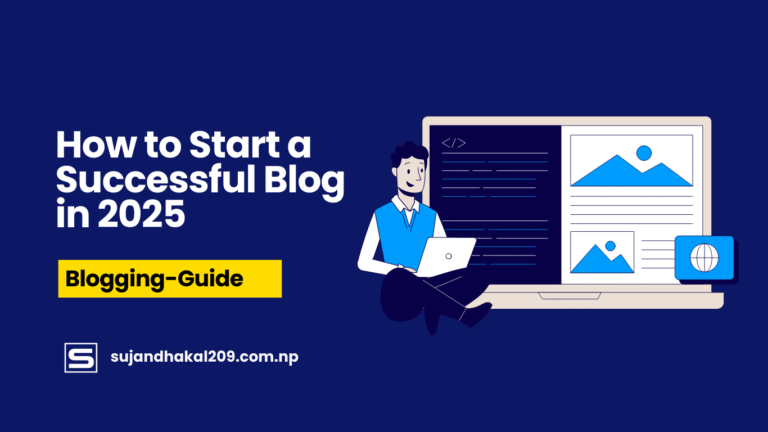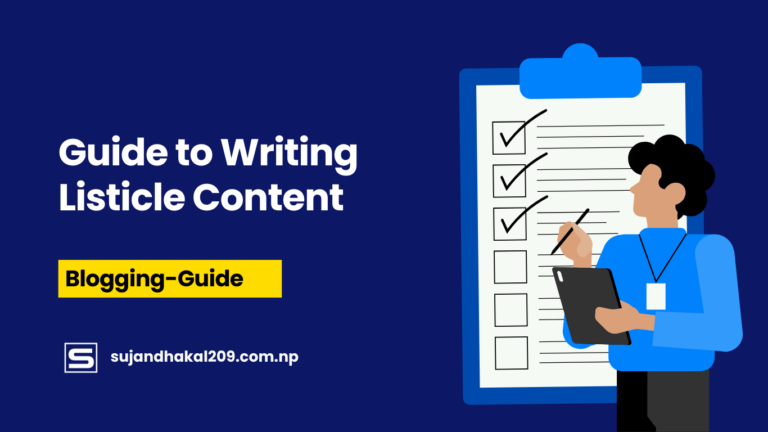Introduction
In today’s digital landscape, content is king—but not just any content. Informational content, when done right, can educate, engage, and rank high on search engines. Whether you’re a blogger, marketer, or business owner, knowing how to write high-quality informational content is crucial for establishing authority and driving traffic.
What Makes Content Informational?
Informational content provides value by answering questions, explaining concepts, or solving problems. Unlike promotional content, which is designed to sell, informational content focuses on educating the reader with trustworthy and well-researched details.
SEO Benefits of Informational Content
- Higher search rankings: Google rewards content that is relevant, well-structured, and valuable.
- Increased website traffic: Informational content attracts organic visitors looking for answers.
- Builds credibility and trust: Well-researched articles establish you as an industry expert.
- Better user engagement: People spend more time on informative pages, reducing bounce rates.
Understanding Your Audience
Before you start writing, you need to understand who you’re writing for. The better you know your audience, the more effective your content will be.
Defining Your Target Readers
- Who are they? (Age, profession, interests)
- What problems are they trying to solve?
- What type of content do they prefer?
Analyzing Audience Intent
Search intent plays a major role in ranking well on search engines. Are users looking for definitions, step-by-step guides, or detailed analyses? Align your content with their intent.
Conducting Keyword Research
- Use tools like Google Keyword Planner, Ahrefs, or SEMrush.
- Find long-tail keywords that match search intent.
- Identify questions people ask on forums like Quora or Reddit.
Structuring Informational Content for Readability
A well-structured article improves readability and user experience, keeping readers engaged longer.
The Importance of Headings and Subheadings
Breaking content into sections (H1, H2, H3, etc.) helps both readers and search engines understand the structure of your content.
Using Bullet Points and Lists
- Makes content easier to scan
- Highlights key takeaways
- Improves engagement
Formatting for Better Engagement
- Short paragraphs (2-3 sentences per paragraph)
- Bold or italicized key phrases for emphasis
- Proper spacing and alignment
Researching and Gathering Reliable Information
If your content lacks credibility, your audience won’t trust it. Always use authoritative sources.
Fact-Checking and Credibility
- Cross-check information from multiple sources.
- Use data from reputable sites like government databases, research journals, or industry reports.
Using Authoritative Sources
- Wikipedia (for general knowledge, but double-check facts)
- Official websites (.gov, .edu, and .org domains)
- Trusted industry blogs and whitepapers
Avoiding Misinformation
Never spread false or outdated information. Always verify facts before publishing.
Writing Engaging and Clear Content
No one enjoys reading complex, jargon-filled content. Keep it simple, clear, and engaging.
Keeping Language Simple and Direct
- Write as if you’re explaining to a 10-year-old.
- Avoid unnecessary complexity.
Avoiding Jargon and Complex Words
If a simpler word exists, use it. For example:
- Utilize → Use
- Commence → Start
- Alleviate → Reduce
Using an Active Voice
Active voice keeps your writing engaging:
- Passive: The blog was written by Sarah.
- Active: Sarah wrote the blog.
SEO Optimization for Informational Content
Writing great content isn’t enough; you need to optimize it for search engines to ensure it reaches the right audience.
Keyword Placement Strategies
- Title and Headings: Place your primary keyword in the H1 and at least one H2.
- Introduction and Conclusion: Naturally include your keyword in the opening and closing paragraphs.
- URL Slug: Use short, descriptive URLs (e.g., example.com/write-informational-content).
- Image Alt Text: Optimize images with keyword-rich alt descriptions.
- Internal and External Links: Link to related articles within your website and authoritative sources outside your site.
Meta Tags and Descriptions
Your meta title and description are what users see in search results. Ensure they are engaging and include your target keywords.
Internal Linking Best Practices
- Link to 3-5 related articles within your content.
- Use keyword-rich anchor text instead of generic phrases like “click here.”
- Keep links relevant and valuable to the reader.
Enhancing User Experience
User experience (UX) affects engagement and rankings. A well-structured, visually appealing post improves readability and retention.
Improving Readability Score
Use tools like Hemingway Editor or Grammarly to simplify sentences and remove complex language.
Using Visuals, Images, and Infographics
- Images break up long text and make content more digestible.
- Infographics summarize data visually.
- Screenshots enhance tutorials or how-to guides.
Mobile-Friendliness and Accessibility
- Use responsive design for different screen sizes.
- Ensure fonts are readable on mobile.
- Optimize loading speed by compressing images and using lightweight elements.
Adding Value to the Reader
Your content should not only inform but also provide real value.
Answering Common Questions
Find frequently asked questions in forums, comment sections, and Google’s “People Also Ask” feature.
Providing Actionable Takeaways
Offer step-by-step guidance, real-world examples, and solutions to user problems.
Offering Unique Insights
Don’t just repeat what’s already on the internet. Add personal experiences, case studies, or unique perspectives.
Ensuring Content Originality
Duplicate content hurts your SEO. Keep your content original and authentic.
Avoiding Plagiarism
- Paraphrase information in your own words.
- Use plagiarism-checking tools like Copyscape or Grammarly.
Writing in Your Own Voice
Develop a writing style that reflects your brand’s personality—whether it’s casual, professional, or authoritative.
Using Plagiarism-Checking Tools
Before publishing, scan your content with plagiarism detectors to ensure uniqueness.
Editing and Proofreading
No matter how well you write, editing is essential.
Importance of Content Editing
A well-edited article appears professional, credible, and polished.
Grammar and Spelling Checks
Use tools like Grammarly or ProWritingAid to detect errors.
Ensuring Logical Flow
- Each section should naturally lead into the next.
- Use transition words like “however,” “therefore,” and “in addition” to maintain flow.
Publishing and Promoting Your Content
After writing, it’s time to publish and share your content.
Choosing the Right Publishing Platform
- Blog (WordPress, Medium)
- Business website
- Social media platforms
Sharing on Social Media
- Post on Facebook, LinkedIn, Twitter, and other relevant platforms.
- Use relevant hashtags to increase reach.
Content Repurposing Strategies
- Turn blog posts into videos, podcasts, or infographics.
- Convert articles into newsletters or ebooks.
Measuring Content Performance
Tracking your content’s performance helps you refine your strategy.
Tracking Analytics and Engagement
Use Google Analytics to track page views, bounce rate, and time spent on the page.
Adjusting Content Based on Feedback
Monitor comments, shares, and audience feedback to improve future content.
Improving Content for Better Rankings
If content underperforms, update it with new keywords, fresh data, and improved readability.
Common Mistakes to Avoid
Many content writers make mistakes that hurt their rankings and engagement.
Keyword Stuffing
Overloading content with keywords makes it unreadable and can lead to Google penalties.
Writing for Search Engines Instead of People
While SEO is crucial, your primary goal should be to help and engage readers.
Ignoring Readability and Engagement
Long, dense paragraphs and poor formatting drive readers away.
Best Tools for Writing Informational Content
Using the right tools can streamline content creation.
SEO and Keyword Research Tools
- Google Keyword Planner
- Ahrefs
- SEMrush
Grammar and Readability Tools
- Grammarly
- Hemingway Editor
Content Analytics Tools
- Google Analytics
- Google Search Console
Conclusion
Writing high-quality informational content isn’t just about words—it’s about delivering value, engaging readers, and optimizing for search engines. By following these best practices, you can create content that ranks well, drives traffic, and establishes authority in your niche.
Final Tips for Long-Term Success
- Always prioritize quality over quantity.
- Update old content regularly.
- Focus on user experience and readability.
FAQs
1. What is the difference between informational and promotional content?
Informational content educates and provides value, while promotional content focuses on selling a product or service.
2. How do I make my informational content more engaging?
Use a conversational tone, include visuals, break up long text with headings, and add real-world examples.
3. How often should I update my informational content?
Update at least every 6-12 months to keep information accurate and maintain rankings.
4. Can AI-generated content rank well on search engines?
Yes, if it’s well-researched, original, and humanized. Avoid generic, low-quality AI-generated content.
5. What’s the best word count for informational articles?
It depends on the topic, but 1,500-3,000 words is ideal for in-depth informational content.





